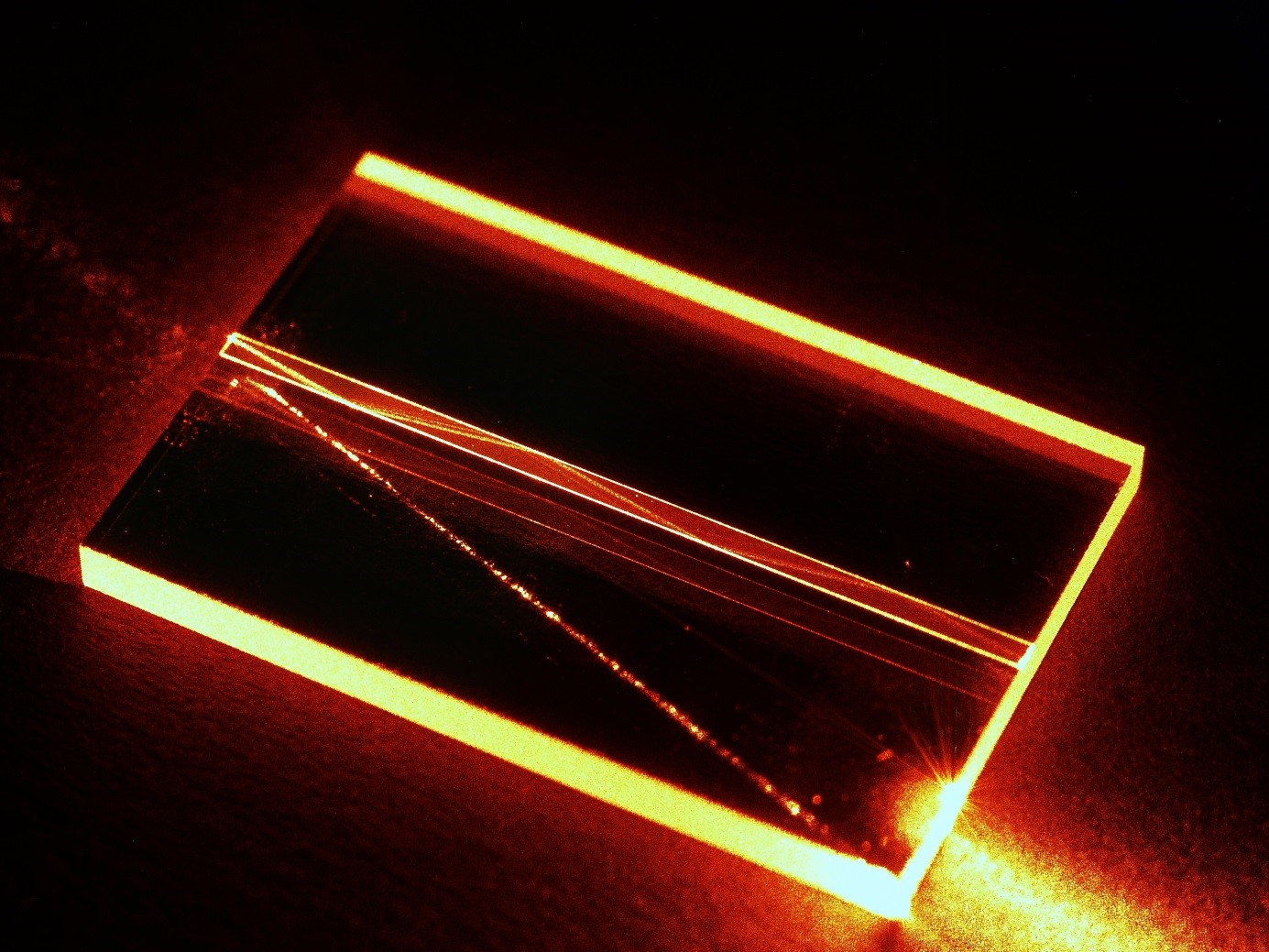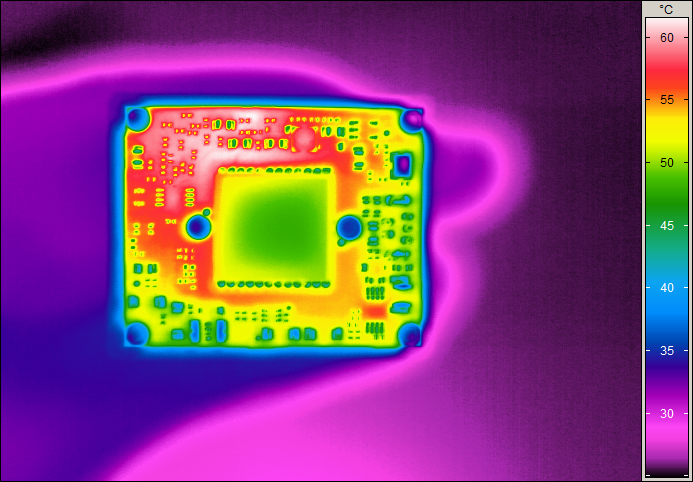The Working Group on Biomolecular Nanostructures and Measurement Technology researches and develops methods and devices for the analysis and application of molecular interfaces and higher-order electronic effects. The main focus is on point-of-care applications as well as applications for hospitals and laboratory analysis. A broad spectrum of microscopic methods is covered, including THz spectroscopy.

Planar optical waveguide for biosensing applications.
Services:
- Fluorescence microscopy on biological cells and single molecules
- Atomic force microscopy in dry and wet conditions, on cells and single molecules
- Electron microscopic analyses
- Coatings (vapor deposition, sputtering), plasma cleaning, laser structuring
- Training in atomic force microscopy and fluorescence microscopy
- Opto-electronic development and optimization, e.g. of sensitivity or costs
- Computer simulation of electronic analogue circuits
- Computation of alternating electric fields for any three-dimensional geometry
 Fraunhofer Institute for Cell Therapy and Immunology, Branch Bioanalytics and Bioprocesses IZI-BB
Fraunhofer Institute for Cell Therapy and Immunology, Branch Bioanalytics and Bioprocesses IZI-BB

